Indiana features a variety of natural and cultural sites across its counties. Visitors can explore underground networks such as the Bluespring Caves, which extend over 34 kilometers, view the sandstone canyons and geological formations at Turkey Run State Park, or admire the Cataract Falls on Mill Creek. The state also has 19th-century covered bridges like the Bridgeton Bridge built in 1868, as well as religious sites such as the Cave of Our Lady of Lourdes replicating the Lourdes sanctuary. History and art enthusiasts will find preserved residences like the T.C. Steele State Historic Site, with the painter’s original studio and period furnishings. The area also features unique structures such as the New Harmony Labyrinth, a stone replica of the Chartres Cathedral labyrinth, and the Artcraft Theater from the 1920s still showing films in its original setting. These destinations offer insights into Indiana's architectural heritage as well as its conserved natural spaces.
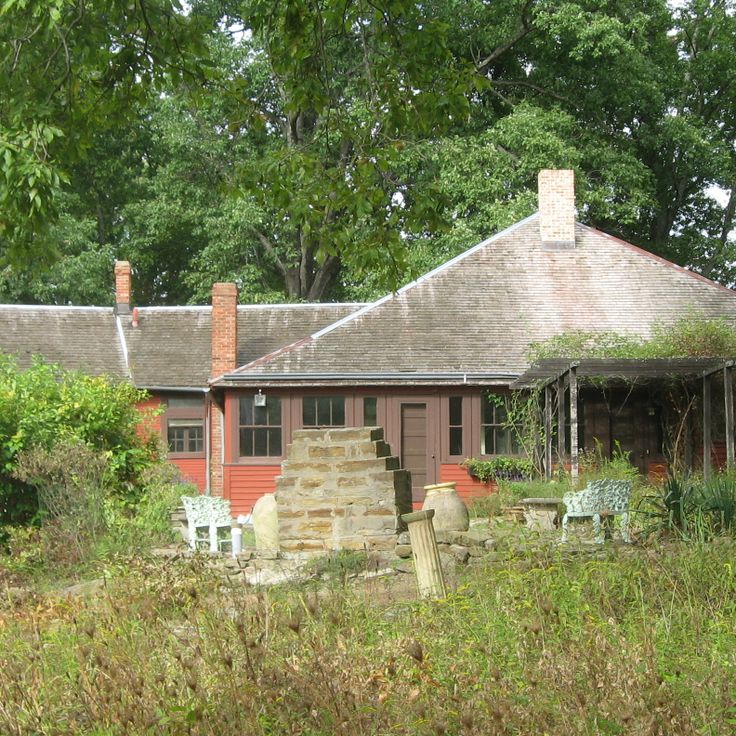
Brown County, Indiana, United States
The T.C. Steele State Historic Site preserves the estate of American Impressionist painter Theodore Clement Steele. The property includes his studio, where he worked from 1907 until his death in 1926, along with his residence featuring original furniture and personal belongings. Exhibitions display paintings from different periods of his career. Gardens and forest trails allow visitors to explore the landscapes that Steele depicted in his works.
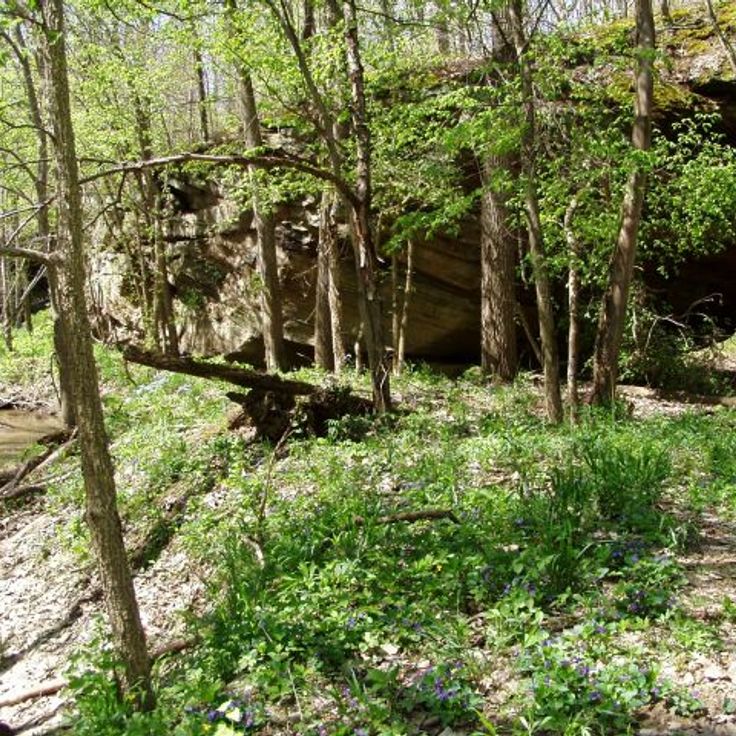
Fountain County, United States
The Portland Arch Nature Preserve protects a 15-meter limestone arch formation created by erosion from Bear Creek. This preserve features sandstone cliffs, wooded slopes, and a network of hiking trails along the watercourse. Visitors can explore the geological formations and observe regional flora and fauna. Access is provided through marked trails crossing deciduous forests.
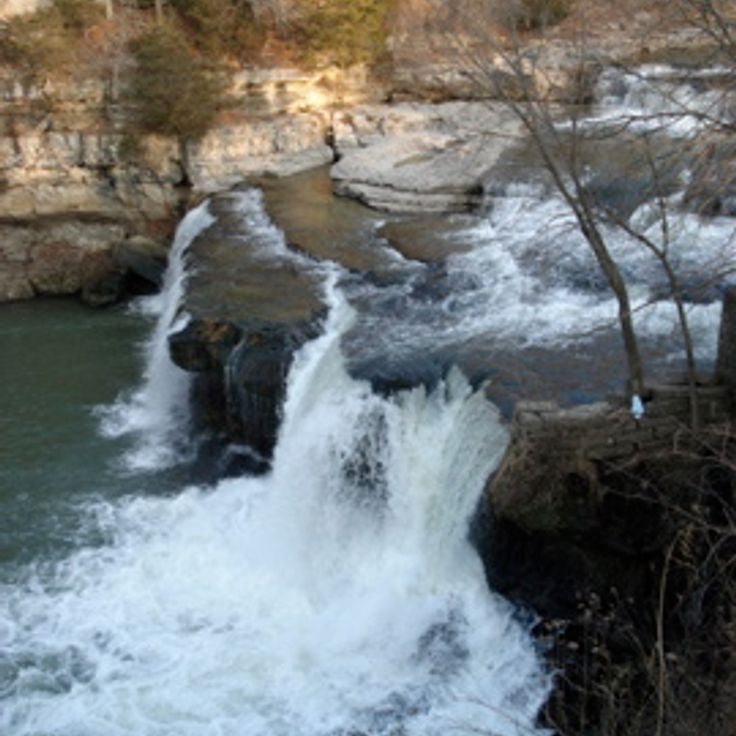
Indiana, United States
Cataract Falls are located in Lieber State Recreation Area and form the largest waterfall system in Indiana. Mill Creek descends here in two stages: the upper falls measure 6 meters in height, while the lower falls drop 5.5 meters. Together, the two waterfalls create a combined vertical descent of approximately 11.5 meters. Hiking trails provide access to both falls and offer viewing points along the watercourse. The area includes picnic facilities as well as a campground near the falls.

Indiana, United States
The Exotic Feline Rescue Center was established in 1991 to provide a permanent home for rescued big cats. The facility spans 44 hectares in Clay County and houses animals from circuses, private ownership, and illegal breeding operations. Visitors can observe tigers, lions, pumas, leopards, and other species during guided tours. The center operates through donations and adoption programs, with emphasis on education about the needs of wild felines in captivity.

Indiana, United States
Bluespring Caverns form an underground cave system extending 34 kilometers, representing one of the longest navigable underground waterways in America. Guided tours take place on electric boats along the underground river, where visitors can observe blind cavefish, crayfish, and salamanders. The temperature remains constant at 11 degrees Celsius throughout the year. Tours last approximately one hour and pass through chambers decorated with stalactites and stalagmites.

Indiana, United States
Turkey Run State Park covers 960 hectares along Sugar Creek in western Indiana. The site preserves deep sandstone canyons formed during the Wisconsin glaciation approximately 70,000 years ago. Trails wind through gorges with walls reaching 23 meters in height, passing through groves of hemlocks and sugar maples. The network includes eleven marked routes, including Trail 3 which features metal ladders through narrow rock passages. The park protects rare plant species such as Canadian yew and various fern varieties in the shaded valley sections.
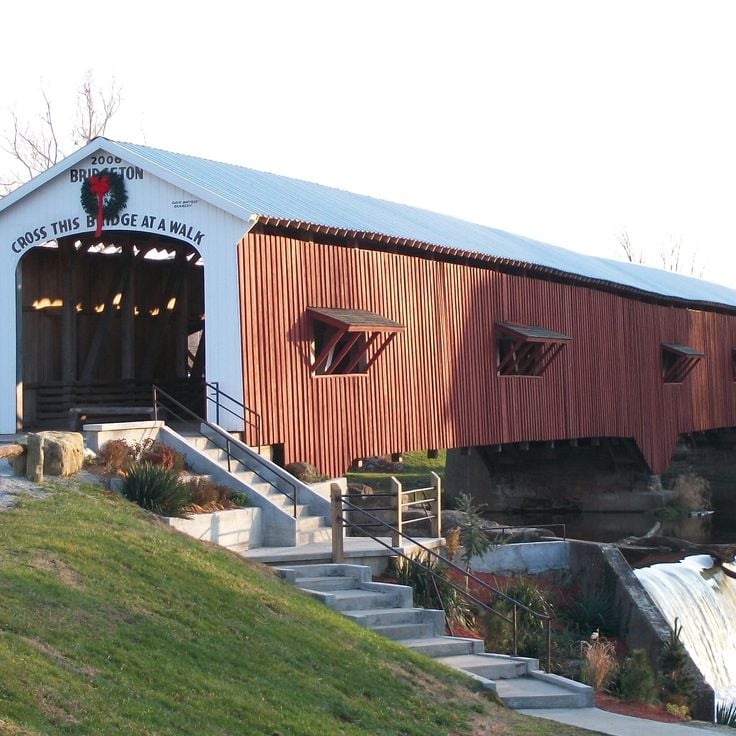
Parke County, United States
The Bridgeton Covered Bridge spans 75 meters over Big Raccoon Creek in Parke County. This wooden construction dating from 1868 features a red exterior with white portal entrances. The bridge uses a truss system for its interior framework and serves as a functional example of 19th-century American bridge engineering. The structure connects the watercourse banks and continues to carry traffic through its covered wooden framework.
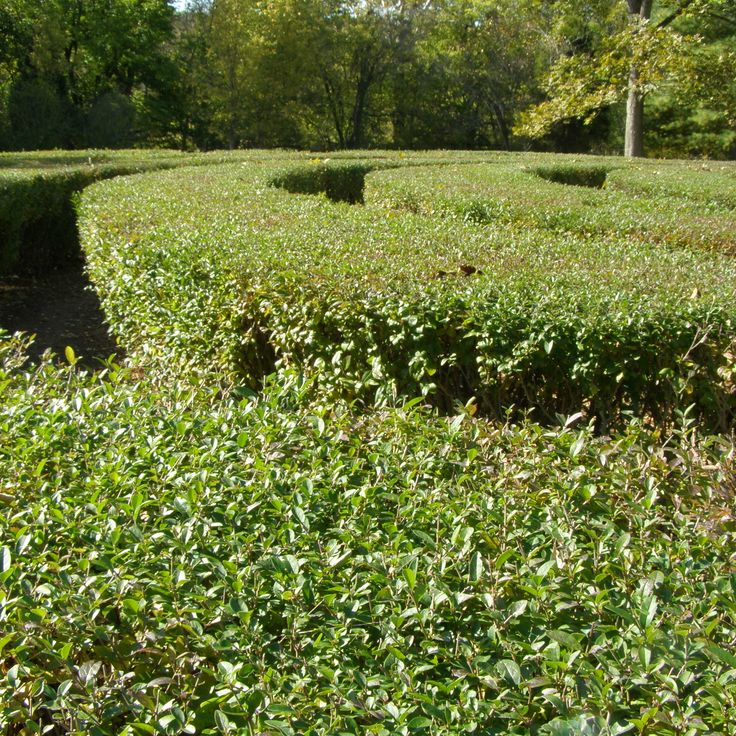
Indiana, United States
The New Harmony Labyrinth is a stone replica of the historic labyrinth at Chartres Cathedral in France. This structure features eleven concentric circuits within an 18-meter diameter garden space. The labyrinth serves as a place for meditation and reflection, and forms part of the historical heritage of the New Harmony utopian community, established in the 19th century.
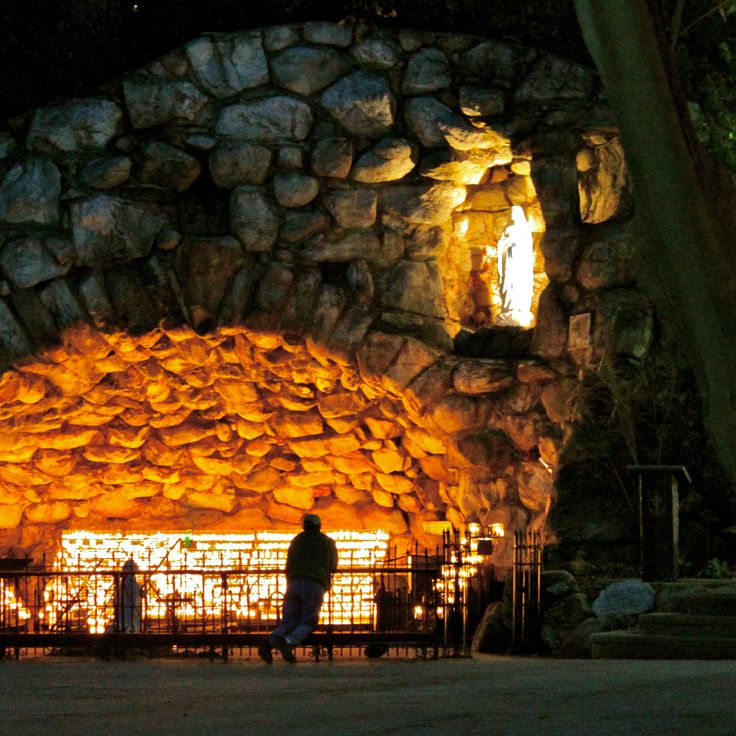
St. Joseph County, Indiana, United States
The Notre Dame Grotto is a replica of the French pilgrimage site of Lourdes. This stone construction serves as a place of prayer and contemplation for the faithful. The grotto houses a statue of the Virgin Mary, candles, and a fountain inspired by the sacred spring at Lourdes. The site provides pilgrims and visitors with space for meditation and spiritual reflection.
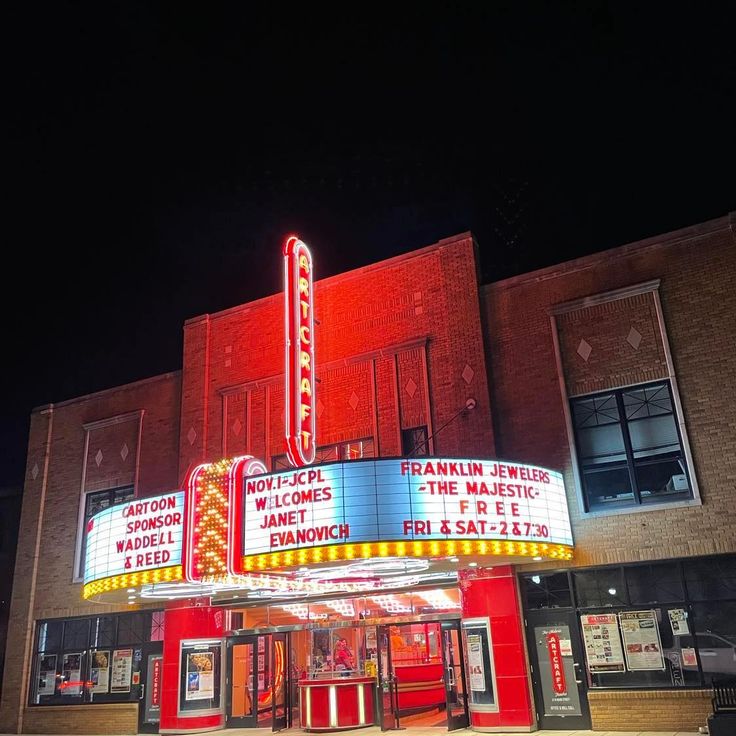
Johnson County, Indiana, United States
The Artcraft Theatre was built in the 1920s and retains its original marquee and interior layout from that era. The venue regularly screens films and hosts performances throughout the year. The establishment operates as a traditional single-screen cinema, allowing visitors to experience moviegoing as it was in earlier decades. The theatre also serves as a venue for cultural programs and special screenings in the community.
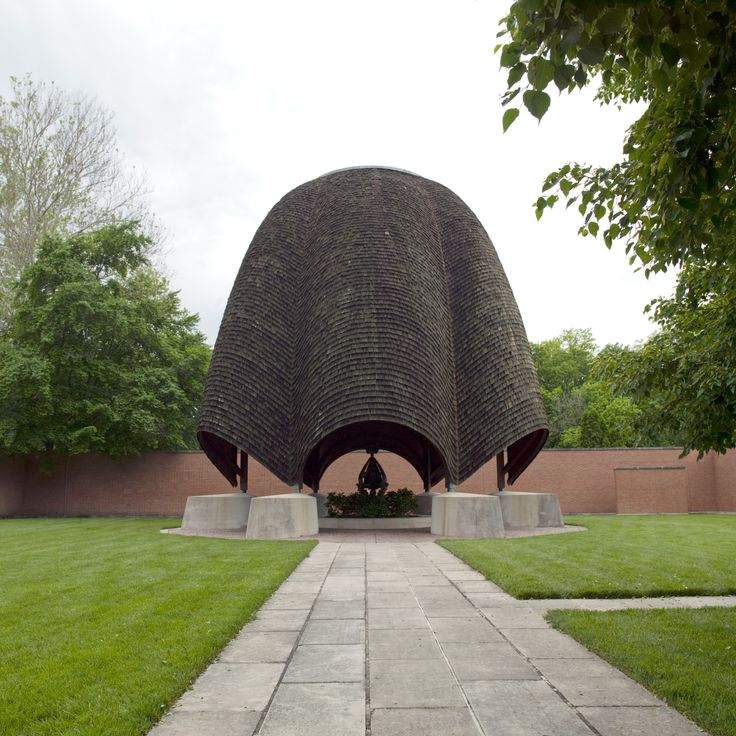
Posey County, United States
The Sanctuaire en Plein Air is located in rural southwestern Indiana and was built in 1960 as an open religious structure. The installation combines modern architecture with spiritual space through brick walls that define an area without a roof. The central dome structure was designed by American architect Philip Johnson, who implemented the concept of a place of worship under the open sky. The brick walls form a rectangular floor plan and create an interior space directly exposed to the sky. The construction serves as a place of contemplation and connects the built form with natural elements such as light and weather conditions.
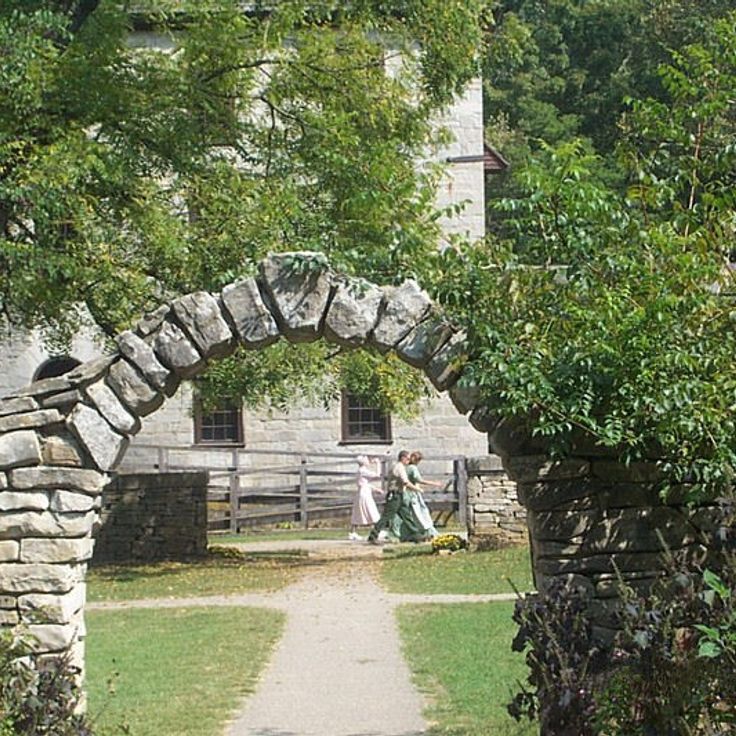
Lawrence County, Indiana, United States
Spring Mill State Park preserves a working water-powered grist mill from 1817 along with a restored pioneer village featuring historic structures from the early settlement period. The site includes several limestone caverns traversed by underground streams, notably Donaldson Cave and Twin Caves, which can be explored by boat. The historic village presents authentic buildings such as a sawmill, a distillery, and dwellings that document settler life in the 19th century. The park offers hiking trails through wooded areas and along ravines, as well as a functioning milling system that processes grain using traditional methods.
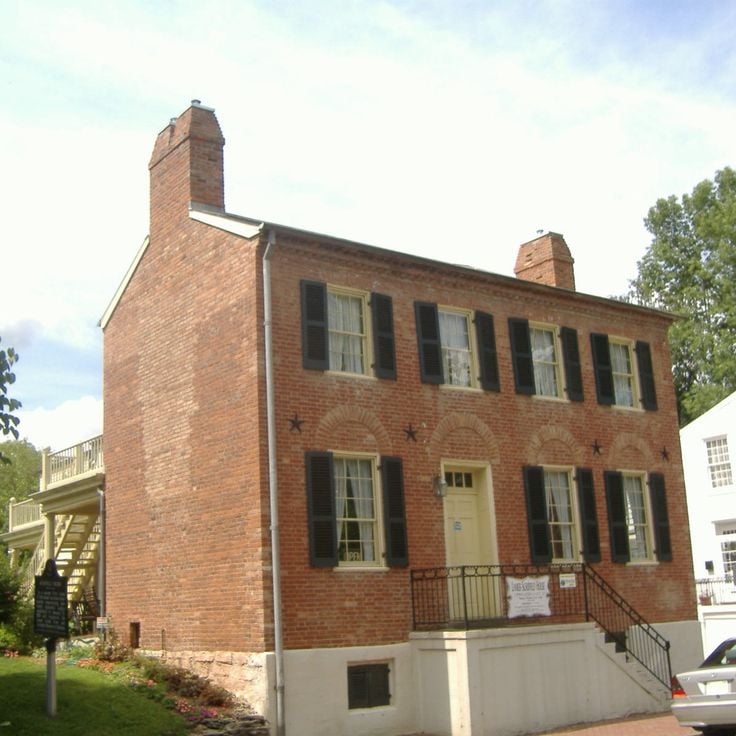
Indiana, United States
The Madison Historic District extends along the Ohio River and preserves over a century of architectural development. Buildings constructed between 1817 and 1939 display various architectural styles, including Federal and Greek Revival. Residential homes and public buildings document the economic and social history of this river town in southern Indiana. The structures along the waterfront formed the commercial and administrative center during the golden age of Ohio River trade.
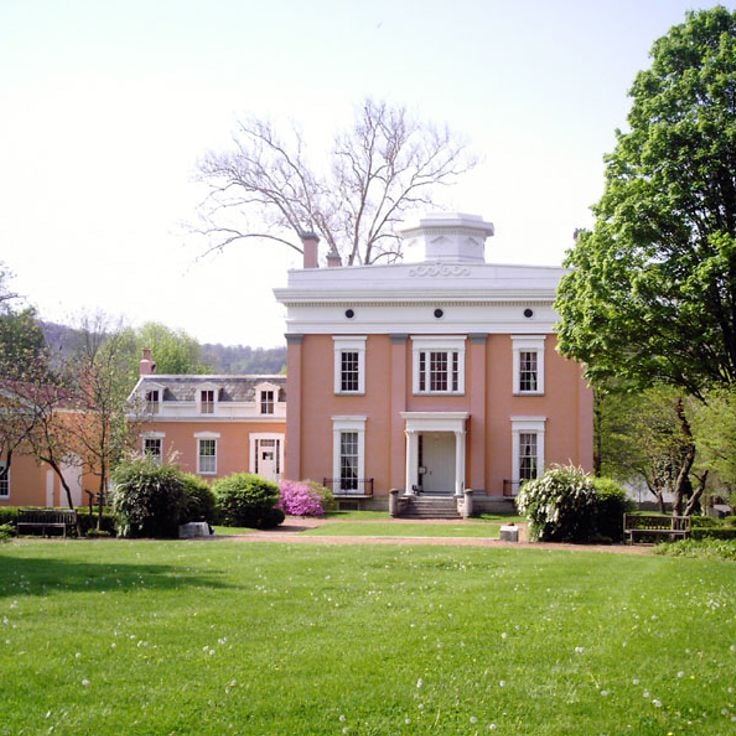
Jefferson County, Indiana, United States
The Lanier Mansion was built in 1844 in the neoclassical style and features carefully decorated interiors furnished with period objects. French gardens extend across the property and offer views of the Ohio River. The building served as the residence of businessman and banker James Lanier and documents the domestic culture of Indiana's wealthy upper class in the mid-19th century.
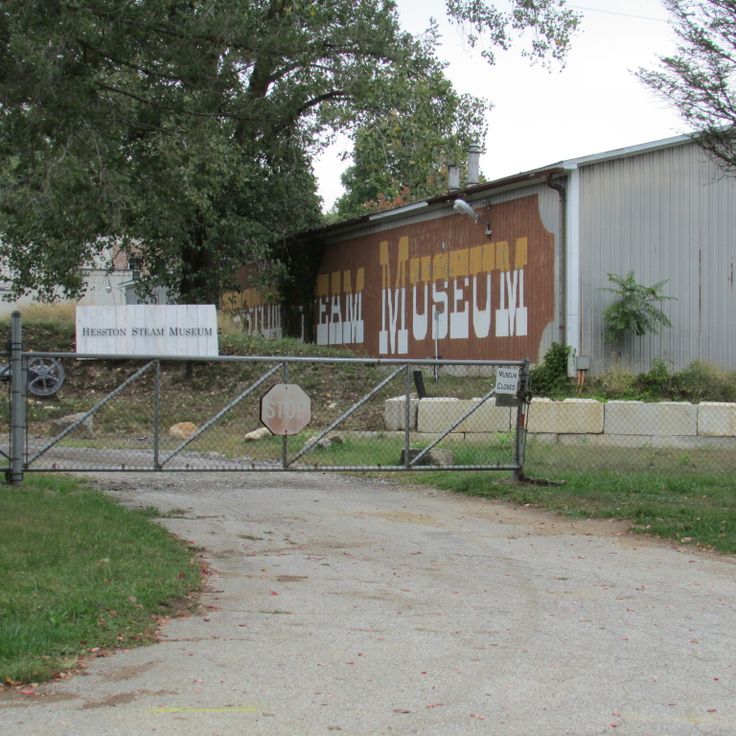
LaPorte County, United States
The Hesston Steam Museum operates narrow-gauge trains on three different track gauges and displays historical steam locomotives as well as industrial railway equipment. The facility maintains a collection of operational steam engines and offers rides on authentic tracks through wooded terrain. The museum preserves the history of steam power in transportation and industry, illustrating the technical evolution of railway engineering from the late 19th to the early 20th century.
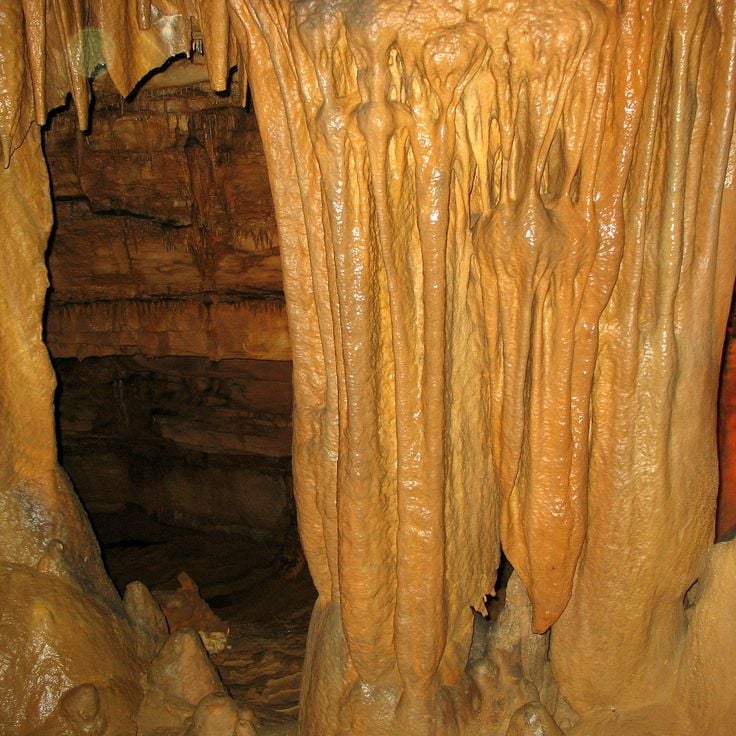
Crawford County, United States
Marengo Cave extends over several kilometers of underground limestone passages in southern Indiana. This cave system was opened to visitors in 1883 and displays numerous geological formations, including flowstones, draperies, and underground streams. The cave formed through limestone dissolution over millions of years and provides insights into the geological history of the region.
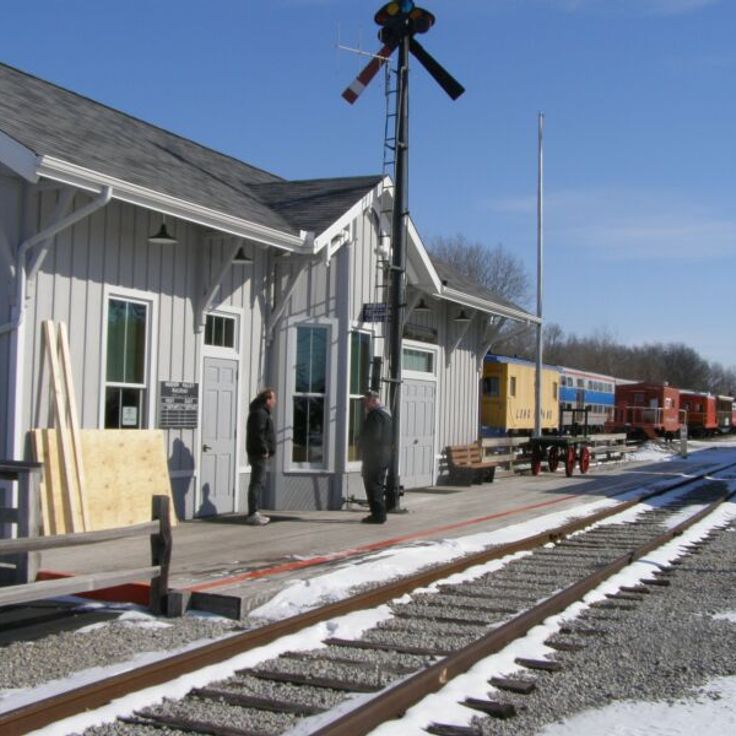
North Judson, United States
The Hoosier Valley Railroad Museum in North Judson preserves historic railroad equipment and offers train excursions through the Indiana countryside. This museum maintains a collection of steam and diesel locomotives, passenger cars, and freight equipment from different periods of American railroad history. Visitors can board restored trains on weekends and experience the landscapes of northwestern Indiana.
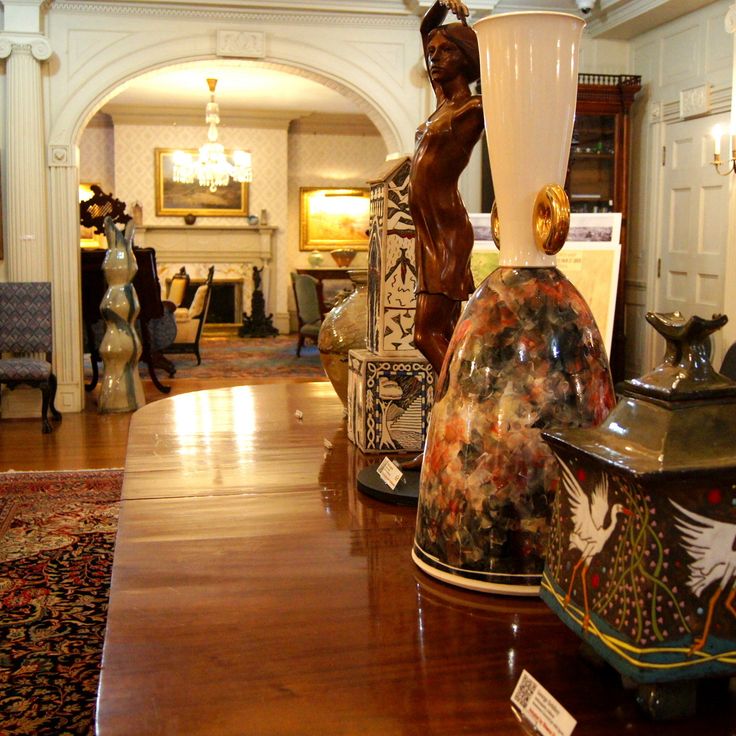
Lafayette, United States
The Haan Museum of Indiana Art occupies a 1939 mansion and displays works by artists from Indiana. The collection includes paintings, sculptures, and decorative objects spanning from the 19th century to the contemporary period. The museum organizes temporary exhibitions of regional art and documents the artistic evolution of the state across different eras.
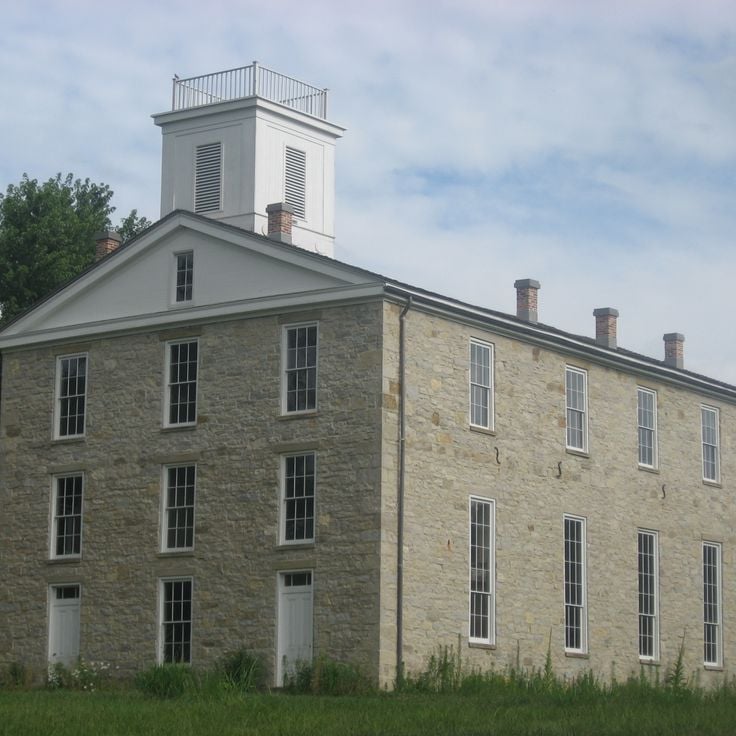
Lancaster, United States
Eleutherian College was founded in 1848 and operated as one of the first educational institutions in the United States to admit students regardless of race or gender. The building served as a station on the Underground Railroad during the Civil War, providing shelter to escaped slaves on their journey to freedom. The college was managed by abolitionists who advocated progressive educational ideals. Today, the restored building is listed as a National Historic Landmark and documents the history of equality and resistance against slavery in nineteenth-century America.
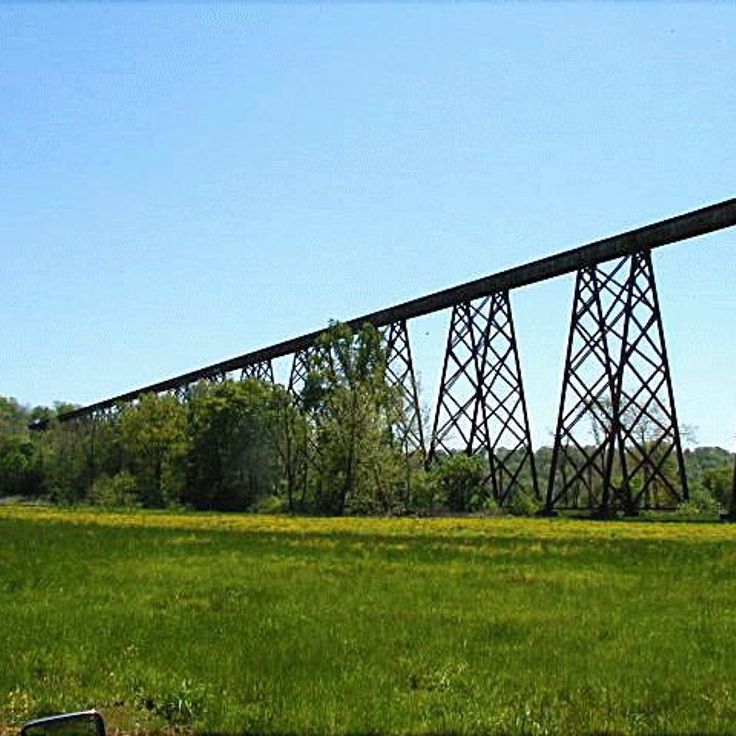
Solsberry, United States
The Tulip Trestle is a steel railroad viaduct measuring 703 meters in length and rising 48 meters above the Salt Creek valley. Built in 1906 for the Chicago, Milwaukee, St. Paul and Pacific Railroad, this structure continues to serve as an active line for freight transport. The viaduct features a truss structure supported by tall steel towers and represents a significant example of early 20th-century railroad engineering in Indiana.
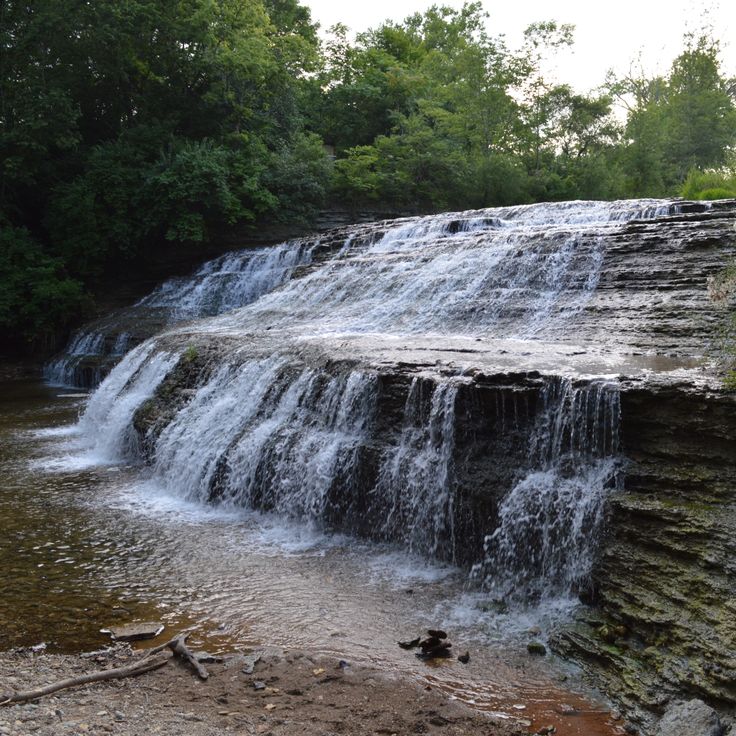
Wayne County, United States
Thistlethwaite Falls forms a limestone waterfall in Wayne County that descends 4 meters along successive rock formations. Water flows over several limestone ledges, surrounded by native deciduous forest. A marked trail crosses the wooded terrain to the falls. The limestone formations display erosion patterns characteristic of the region. Access is via public hiking trails in eastern Indiana.
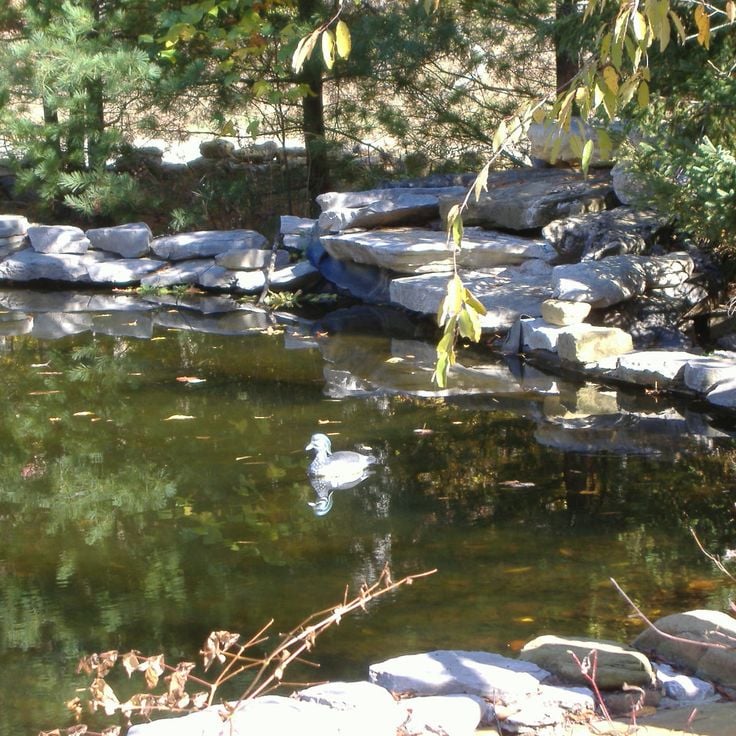
Indiana, United States
O'Bannon Woods State Park covers 800 hectares of forested land in southern Indiana. The area contains several limestone caves accessible to visitors. A network of trails runs through the woods and along rock formations. The park provides camping facilities for tents and recreational vehicles, along with a nature center offering programs on regional geology and wildlife. The caves formed through erosion of the limestone bedrock over thousands of years.
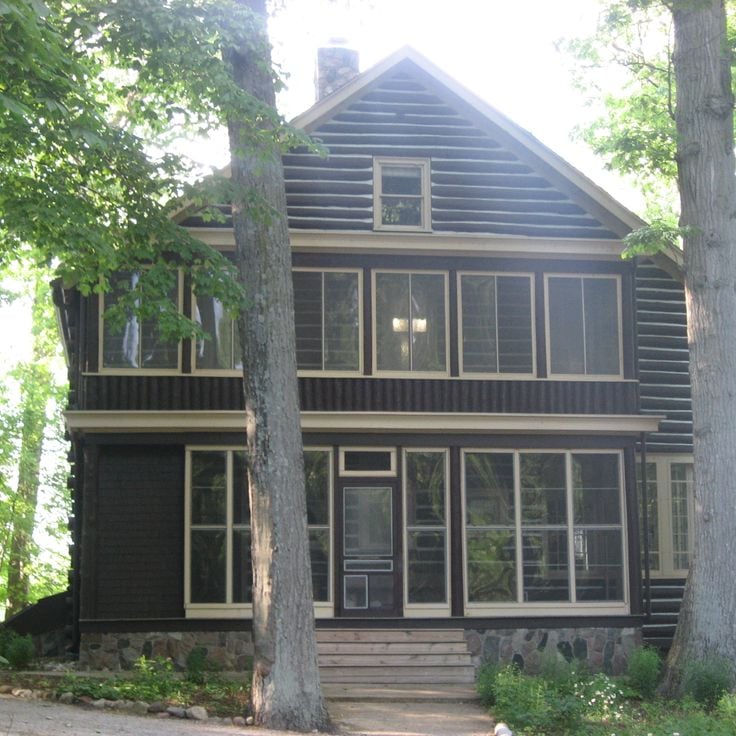
Noble County, Indiana, United States
The Gene Stratton-Porter State Historic Site spans 60 hectares and preserves the legacy of the writer and naturalist. The property includes her rustic Limberlost cabin where she wrote many of her works. The native gardens feature plant species that she documented in her books. Several forest trails cross the areas where she observed and photographed flora and fauna. The estate serves as an educational center on natural history and early 20th-century literature.
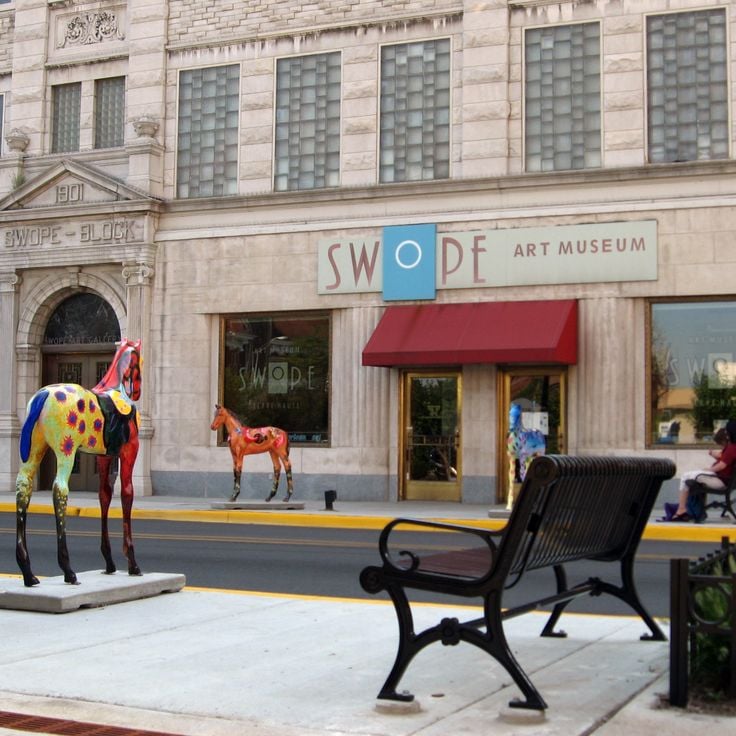
Indiana, United States
The Swope Art Museum was founded in 1942 and houses a collection of over 2,500 works by American artists. The collection includes paintings, sculptures, and prints from the 19th and 20th centuries. The museum is located in Terre Haute and displays works by significant American painters as well as regional artists from Indiana. The permanent exhibition documents the evolution of American art over two centuries.
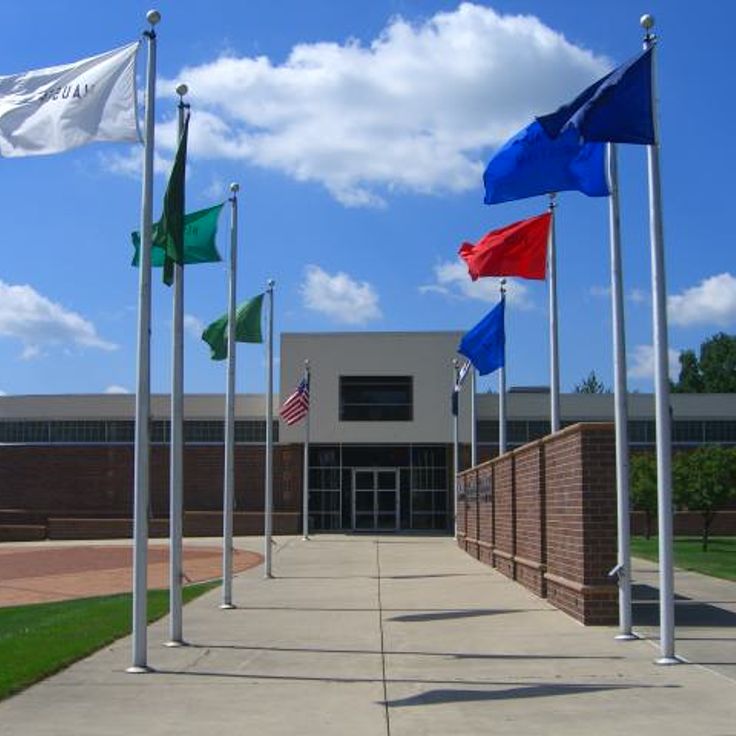
New Castle, United States
The Indiana Basketball Hall of Fame in New Castle preserves the history of basketball in the state of Indiana. The museum displays jerseys, photographs, trophies, and personal items from high school and professional players. The collection documents the evolution of the sport since 1911 and honors the achievements of athletes, coaches, and teams that have shaped basketball in Indiana.

Indianapolis, United States
The Indianapolis Cultural Trail connects six distinct neighborhoods and several cultural centers across thirteen kilometers of urban pathways in the heart of the city. This route dedicated to cyclists and pedestrians crosses downtown Indianapolis, providing access to theaters, museums, and sports facilities. Along the route, visitors discover numerous public art installations by contemporary artists as well as sections planted with native plant species. The trail integrates with the city's public bike-sharing system and connects residential areas to commercial districts.
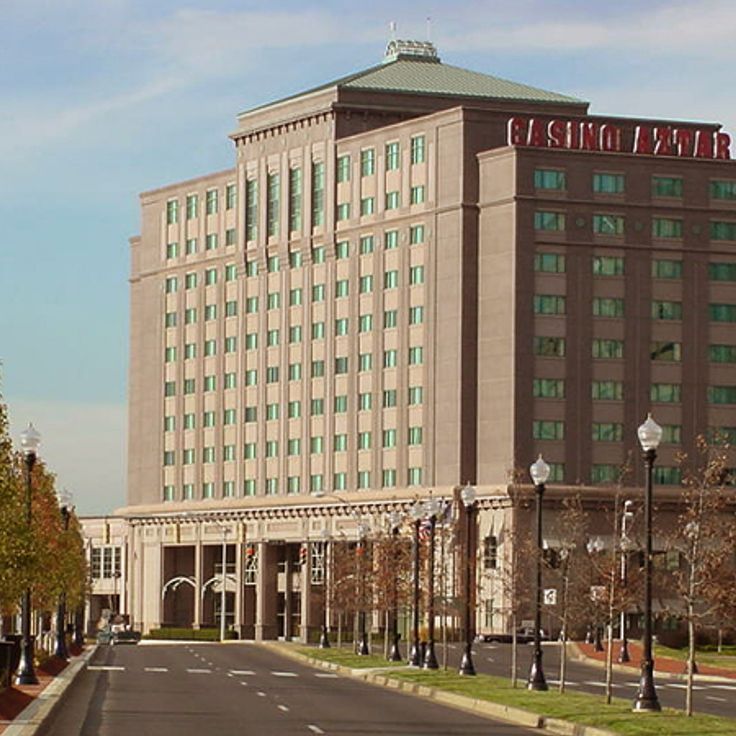
Evansville, United States
The Tropicana Evansville is located along the Ohio River and offers a complete gaming floor with numerous tables including blackjack, roulette and poker, as well as an extensive selection of slot machines. This complex features several restaurants serving different types of cuisine and operates multiple entertainment venues that regularly host concerts, comedy shows and other events. The establishment also includes an electronic table games section and a bar overlooking the river.
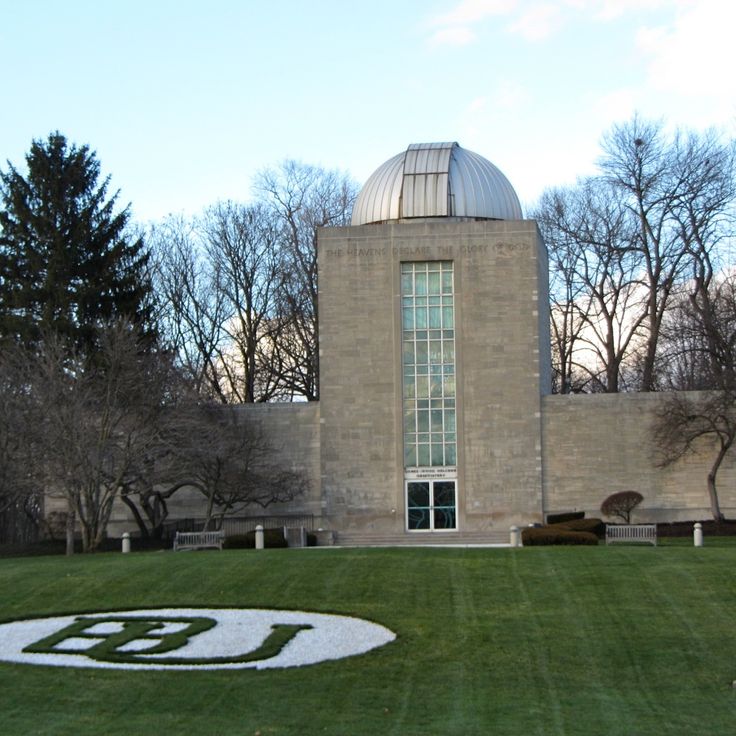
Indianapolis, United States
The Holcomb Observatory at Butler University features a 96-centimeter reflecting telescope installed in 1954. The facility hosts regular public observation evenings where visitors can view planets, stars, and distant galaxies. The observatory serves as a research center for physics and astronomy students and offers educational programs for schools and individuals interested in learning about the solar system and the evolution of modern astronomy.
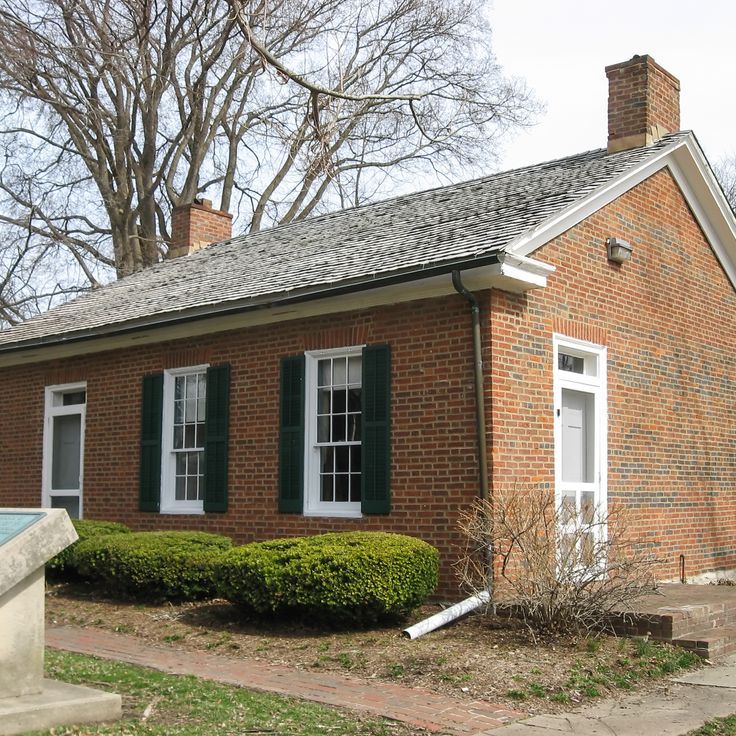
Washington County, Indiana, United States
The John Hay Center is a historical complex located in Washington County that brings together three separate museums. The facility features a reconstructed 1800s village with period buildings and workshops, a county heritage museum displaying documents and artifacts related to regional development, and a railway exhibition center housing historical locomotives and railcars. The complex traces the pioneer era, economic development, and railway history of the region.
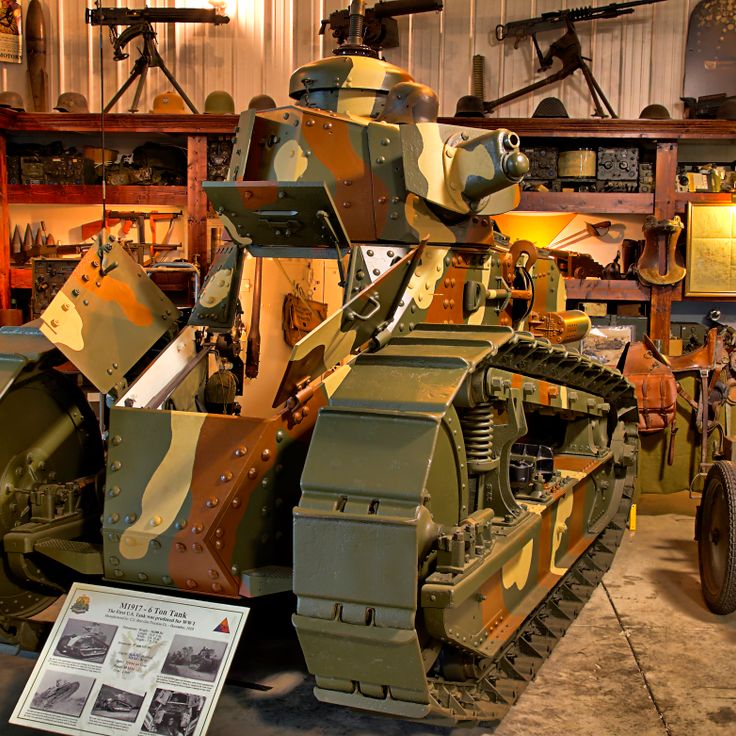
Montgomery County, United States
The Ropkey Armor Museum displays military equipment from conflicts of the 20th and 21st centuries. The collection includes operational tanks, armored vehicles, artillery pieces, and infantry equipment from World War I, World War II, the Korean War, the Vietnam War, and subsequent military operations. This museum allows visitors to examine historical military vehicles up close and trace the technological evolution of warfare.

Muncie, United States
Minnetrista is a 16-hectare cultural center located along the White River in Muncie. This campus includes early 20th-century historic buildings, among them the Ball estate, several exhibition halls dedicated to regional history and culture, French gardens, and nature trails along the riverbanks. The site operates as a museum, educational center, and public park offering temporary exhibitions on local industrial and social history.
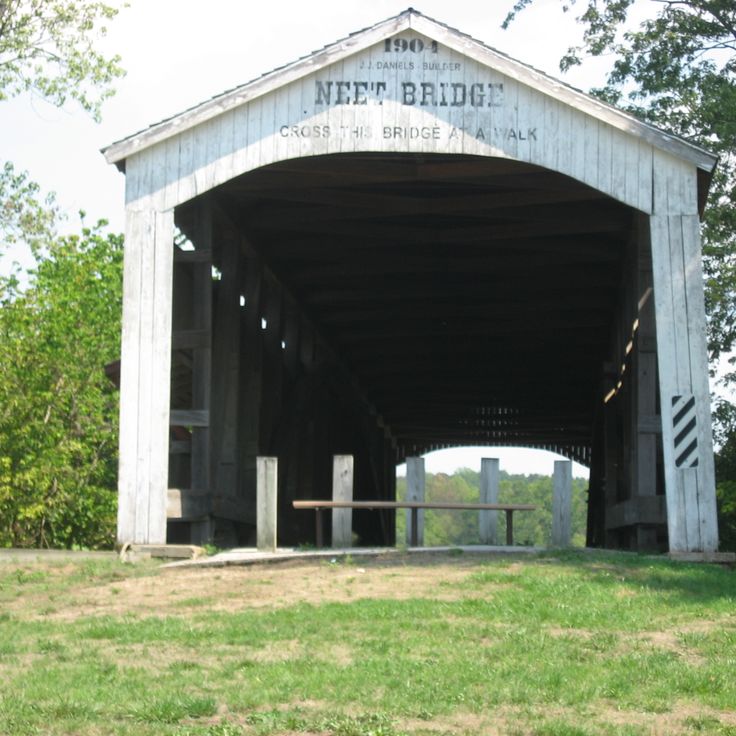
Parke County, Indiana
The Neet Covered Bridge was built in 1904 over Little Raccoon Creek and spans 38 meters in length. This wooden structure uses the Burr arch design, which combines an arch with a truss system to provide additional structural support. The exterior is clad with vertical boards that protect the wooden framework from weather conditions. Parke County is home to numerous historic wooden bridges from the late 19th and early 20th centuries, and the Neet Bridge represents one of these preserved examples of early American engineering in rural Indiana.